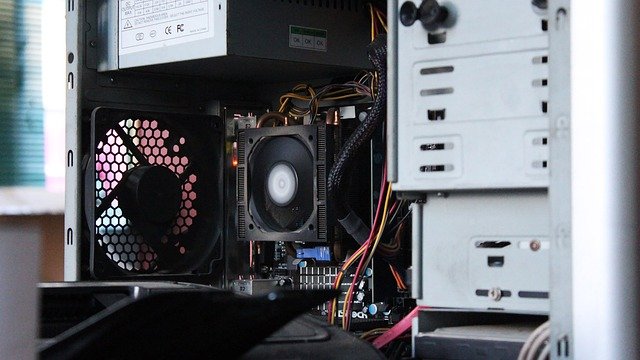Securing firmware and hardware: practical steps for users
Securing the firmware and hardware in your devices reduces risk from malware, failures, and unauthorized access. Users of laptops, desktops, and other electronics can take practical steps to keep processors, memory, storage, and peripherals functioning safely while balancing upgrades, repairability, and sustainability.

Securing firmware and hardware helps protect device integrity, user data, and long-term reliability. Whether you use a laptop or desktop, basic habits like keeping firmware updated, validating components, and managing peripherals improve resilience against compromise and accidental damage. This article explains practical steps for protecting processors, memory, storage, battery systems, connectivity, displays, GPUs, and other components while considering upgrades, repairability, and sustainability.
How do firmware updates protect laptop and desktop systems?
Firmware bridges hardware and software: BIOS/UEFI, embedded controller firmware, SSD controllers, and GPU microcode all influence security and stability. Apply vendor-supplied firmware updates promptly because they often fix vulnerabilities, improve compatibility with processors and memory, and correct stability issues for storage and battery management. Before updating, back up important data, read release notes to confirm fixes, and prefer updates directly from manufacturer sites or official update utilities. Avoid unofficial firmware sources, verify checksums when provided, and, for critical systems, schedule updates when you can recover the device if an update fails.
What should you check on hardware components like memory and storage?
Validate hardware health periodically. Run memory tests to detect failing RAM modules, check SMART reports for storage devices to anticipate SSD or HDD problems, and monitor processor temperatures to catch cooling issues early. When replacing components, choose compatible parts (matching memory type and speed, supported storage interfaces) and keep firmware for controllers up to date. For storage, enable hardware-backed encryption where available and use trusted erase or secure-wipe procedures before disposing or recycling drives to prevent data leakage.
How can battery and connectivity security be improved?
Batteries need both safety and firmware awareness: monitor battery health metrics provided by the system and update charger or battery firmware if manufacturers issue patches. Use official power adapters to avoid damage. For connectivity, secure both wired and wireless interfaces: apply firmware updates to routers and modems, change default credentials, and enable encryption on Wi‑Fi networks. On devices, disable unused radios (Bluetooth, NFC) and use firewall rules to limit unsolicited inbound connections. Network segmentation and guest networks reduce the risk to laptops, desktops, and connected peripherals.
How to secure peripherals, displays, and GPU?
Peripherals such as keyboards, mice, webcams, and external storage can be entry points for attacks. Use trusted peripherals, keep their firmware updated where applicable, and be cautious with USB devices sourced from unknown suppliers. For displays and GPUs, install vendor drivers and firmware from official channels; driver updates can include security fixes and performance improvements. When using external GPUs or docks, check compatibility and firmware versions to ensure stable connectivity. Physically secure webcams and microphones where privacy is a concern.
When are firmware upgrades and repairability considerations important?
Evaluate the trade-offs between upgrading components and repairability. Upgrades to processors, memory, or storage can extend a device’s useful life and support security fixes, but some modern systems limit upgradeability to improve thinness or sealing. Prioritize devices that allow access to upgrade memory and storage or that provide documented service manuals. If a device is hard to repair, plan for alternate mitigation such as extended warranty, regular backups, and conservative update policies that reduce the risk of bricking during firmware changes.
How does sustainability relate to secure hardware practices?
Security and sustainability overlap: well-maintained hardware lasts longer, reducing electronic waste. Choose repairable components and favor modular designs that allow memory or storage upgrades rather than full device replacement. Properly wipe and repurpose functioning components from older machines when secure erasure is performed. When disposing of devices, follow local services for recycling and data destruction. Consider energy-efficient settings and firmware options that optimize battery longevity and reduce the environmental footprint of constant replacements.
Conclusion A pragmatic approach to securing firmware and hardware combines regular official updates, hardware health monitoring, careful component selection for upgrades, and attention to repairability and sustainability. By managing firmware sources, validating hardware status, securing connectivity and peripherals, and planning for responsible upgrades or disposal, users of laptops, desktops, and other electronics can reduce security and reliability risks without unnecessary complexity.





